When God rescued King Hezekiah, part 1
Archaeology confirms the biblical account of Judah’s deliverance from Assyrian invaders

One of the most remarkable examples of God’s deliverance in the Bible is the encounter between Hezekiah, king of Judah, and Sennacherib, king of Assyria, at the end of the 8th century BC. A detailed account, from the Israelite perspective, can be found in 2 Kings 18–19.1 In recent times, this story has been made all the more fascinating since archaeologists have uncovered abundant evidence to corroborate many of the details in the biblical record. Given that the discipline of archaeology must rely upon whatever physical evidence just happened to survive the ravages of time, archaeologists are not able to confirm every historical detail in Scripture. Yet there are numerous cases in which the excavated evidence supports the Bible in spades, as it does in this instance. What follows in this three-part series of articles are many of the significant discoveries that help to confirm the Bible’s record of the confrontation between Sennacherib and Hezekiah.
Hezekiah’s royal seal
Hezekiah, a descendant of King David, was the king of Judah at the time the northern kingdom of Israel fell to the Assyrians in 722 BC (2 Kings 18:9–10). The date comes to us from archaeology, but the timeframe fits the biblical account perfectly.

In the 1990s, several clay seal impressions, called bullae (singular, bulla), appeared on the antiquities market, bearing the official stamp of King Hezekiah. They are regarded as genuine even though their places of discovery were undocumented.2 Fortunately, another was found in 2009—this time during an official excavation in Jerusalem (figure 1.1).3 Its inscription reads: “Belonging to Hezekiah, (son of) Ahaz, King of Judah.” As can be seen in this example, Hezekiah’s royal seals also included several Egyptian motifs, including a winged sun (or sometimes a scarab) and the ankh—a hieroglyphic symbol representing ‘life’. Although it often surprises Bible students, archaeology reveals that it was not uncommon for Egyptian iconography to appear on Hebrew seals and other inscriptions during Hezekiah’s time and afterward.4 Moreover, the biblical record attests that Egypt supported Judah at this time, as Hezekiah was accused of relying on Egypt for chariots and horsemen (2 Kings 18:21–24) to assist him in his rebellion against Sennacherib (figure 1.2) and the oppressive Assyrian regime.
Invasion documented by Sennacherib’s Annals
When Sennacherib came to the throne, historians believe Hezekiah saw an opportunity to throw off the yoke of Assyria. As a result of Hezekiah’s insubordination, “Sennacherib king of Assyria came up against all the fortified cities of Judah and took them” (2 Kings 18:13). Archaeologists have recovered many Assyrian inscriptions from their homeland that describe Sennacherib’s various military excursions. These official accounts of the Assyrian king’s exploits are called Sennacherib’s Annals. The later editions include this advance into Judah, which took place during the third military campaign of his career in 701 BC. Three finalized, nearly identical copies of the Annals inscribed on hexagonal prisms have been found. The Chicago Prism resides in the Oriental Institute, the Taylor Prism is in the British Museum, and the Jerusalem Prism is in the Israel Museum. In these documents, Sennacherib claimed that he did indeed mount a major attack on Judah, just as the Bible records. To quote from the Chicago Prism (figure 1.3), Sennacherib boasted:

Moreover, (as for) Hezekiah of the land Judah, who had not submitted to my yoke, I surrounded (and) conquered forty-six of his fortified cities, fortresses, and small(er) settlements in their environs, which were without number, …5
Destruction of Judahite cities
The Bible does not explicitly say which fortified cities were captured, although it does name two that Sennacherib attacked: Lachish and Libnah (2 Kings 19:8), both to the southwest of Jerusalem (figure 1.4).6 Sennacherib’s Annals also mention his defeat of several Philistine cities along with the border town, Timnah, which is due west of Jerusalem and famous for being the place where Sampson married a Philistine woman (Judges 14).7 Though Timnah was controlled by the Philistines at different points in history, evidence from the site suggests that, just prior to Sennacherib’s conquest of the city, Timnah belonged to Judah.8
When these and other Judahite cities are examined, do they contain any evidence that they were assaulted or even destroyed by Sennacherib? In many cases, yes, though not all do. Sennacherib probably conquered many cities without demolishing them—leaving no traces for modern archaeologists to detect. Libnah, for example, has been tentatively identified with Tel Burna, and that site has yielded no destruction evidence. On the other hand, Lachish (Tell ed-Duweir) and Timnah (Tel Batash) contain clear indications that they were violently overtaken.

Archaeologists have surveyed and excavated many other towns in Judah, and the big picture is undoubtedly consistent with a major Assyrian invasion. In addition to Lachish and Timnah, the following sites have been excavated and show destruction evidence from this time, from north to south: Beth-Shemesh, Ramat Rachel, Tell ej-Judeideh, Tel ‘Erani, Tel ‘Eton, Tell Beit Mirsim, Khirbet Rabud (Debir), Tel Halif, Arad, Tel Sheva (Beersheba), and Tel ‘Ira.9,10 Furthermore, though they fail to display signs of battle, Tell en-Nasbeh (Mizpah) and Gibeon contain indirect evidence for invasion, such as the abandonment of various structures after 701 BC.11
Mass deportation
Sennacherib’s Annals say that he deported over 200,000 of the inhabitants of Judah’s cities to elsewhere in his empire (cf. 2 Kings 18:31–32).12 In agreement with this claim, Yehuda Dagan’s survey of the Shephelah (the western foothills of Judah where many of the conquered cities were located) showed that this region underwent a dramatic shift in habitation at the turn of that century. Though densely populated in the eighth century BC, as shown by 289 identifiable settlements, following the displacement of the people by Sennacherib this figure drops to just 85 detectable sites—taking up a mere third of their former area.13
Appeasement amounts
According to Scripture, Hezekiah initially tried to buy his way out of trouble.
Hezekiah king of Judah sent to the king of Assyria at Lachish, saying, ‘I have done wrong; withdraw from me. Whatever you impose on me I will bear.’ And the king of Assyria required of Hezekiah king of Judah three hundred talents of silver and thirty talents of gold. (2 Kings 18:14–15)
Hezekiah even stripped the palace and the temple of their treasures in order to pay the ransom. Remarkably, Sennacherib acknowledged receipt of these very payments (and more) in his Annals. He specified the same amount of gold as the Bible says Hezekiah paid, though there is a discrepancy in the amount of silver.14 Sennacherib gloated:
As for him, Hezekiah, fear of my lordly brilliance overwhelmed him and, after my (departure), he had … 30 talents of gold, 800 talents of silver, choice antimony, … ivory beds, armchairs of ivory, elephant hide(s), elephant ivory, ebony, boxwood, every kind of valuable treasure, as well as his daughters, his palace women, male singers, (and) female singers brought into Nineveh, my capital city …15

According to the details in the biblical account, it appears that Sennacherib continued to attack Judah even after Hezekiah offered this tribute, but it is not clear why he did so. Of course, in Sennacherib’s telling, he only focused on his successes, such as the wealth he confiscated. However, the Bible goes on to describe other reasons, not so flattering to Sennacherib, why he ultimately abandoned his pursuit of Hezekiah. This will be addressed in part 3.
The importance of Lachish
Sennacherib’s greatest triumph during his campaign into Judah was his capture of the city of Lachish (figure 1.5). The British Museum has an elaborate set of reliefs from Assyria that detail the siege and conquest of the city (see below). The Bible says that Sennacherib was personally present to oversee the siege, alongside his “great army” (2 Kings 18:17; 2 Chronicles 32:9).
Archaeologists have been excavating Lachish since 1932. They have been able to identify the walls and buildings that were destroyed by Sennacherib’s forces. In Hezekiah’s time, Lachish was the second most important city in Judah, after Jerusalem. It was surrounded by strong fortifications on a steep hill—including an outer revetment wall about halfway up the slope, and an inner wall at the summit about 6m (20 ft) thick, with many incorporated towers. The city enclosed by the inner wall was over 18 acres in size.


To enter Lachish, one would ascend an inclined path from the southwest corner up to an outer gatehouse, pass through and turn right, then travel across an open courtyard before coming to the massive (24 x 24 m; 80 x 80 ft) six-chambered inner gateway (figure 1.6), which guarded access to the city. In general, Lachish was well protected from enemies. Yet these defenses were not enough to prevent its overthrow by the wrath of Sennacherib and the superior Assyrian war machine.
Hezekiah’s reforms
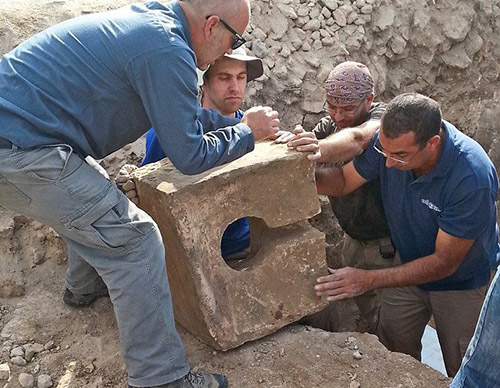
Intriguingly, some of the recent discoveries at Lachish appear to support the Bible’s portrayal of King Hezekiah as a godly leader and spiritual reformer. The biblical account says that Hezekiah “did what was right in the eyes of the Lord, according to all that David his father had done. He removed the high places and broke the pillars and cut down the Asherah” (2 Kings 18:3–4). He also restored temple worship and reinstituted the celebration of Passover in Jerusalem after years of neglect (2 Chronicles 29–30). Humorously, the Assyrians attempted to use Hezekiah’s reform efforts against him by claiming that he had destroyed the altars and high places of his own God (2 Kings 18:22). No, Hezekiah was actually being obedient to the true God of Israel, following the instructions He had revealed to His people in the Mosaic Law about how their religious observances were to be conducted.
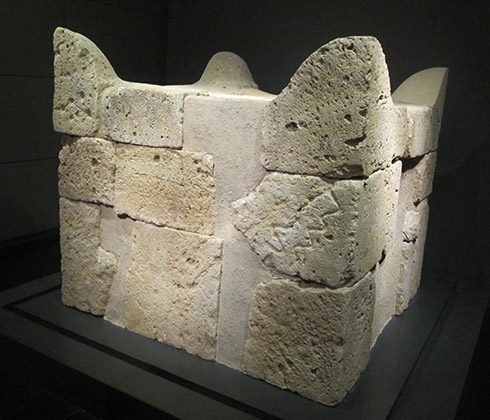
Notably, in 2016, archaeologists found altars and pottery in one of the enclosures within Lachish’s six-chambered gate, apparently used in syncretistic or pagan worship. But the horns of the altars had been deliberately cut off (figure 1.7) and embedded in an adjacent wall. Also, a stone toilet (figure 1.8) was placed there, the excavators believe, as a means of desecrating the shrine and prohibiting its further use (cf. 2 Kings 10:27).16 The discoverers themselves associate this desecration with Hezekiah’s campaign against idolatry.
Additional evidence arguably linked to Hezekiah’s religious reforms has been found at several other locations in Judah as well, though the evidence is not decisive and scholars have reached no consensus.17 The possible connections to Hezekiah include a dismantled and discarded altar found at Beersheba—reassembled by modern archaeologists (figure 1.9), a buried shrine at Arad, and a former temple building at Tel Motza where figurines and an incense burner were intentionally damaged and buried under ash.18
Battle at Lachish


Abundant evidence has also been found at Lachish which reveals details of the Assyrian attack. First, to this day, when one visits Lachish, one can see a large mound of piled stones in the southwest corner of the city. The Assyrians had gathered them from surrounding fields and heaped them there in order to form a siege ramp (figure 1.10). They covered the surface of these stones with mortar so that the ramp would support the ancient Assyrian equivalent of a tank—a wheeled siege machine, equipped with a battering ram. The Assyrians drove the sharp points of these battering rams into the southwest fortifications, where a topographic saddle made this spot the most vulnerable place to attack.
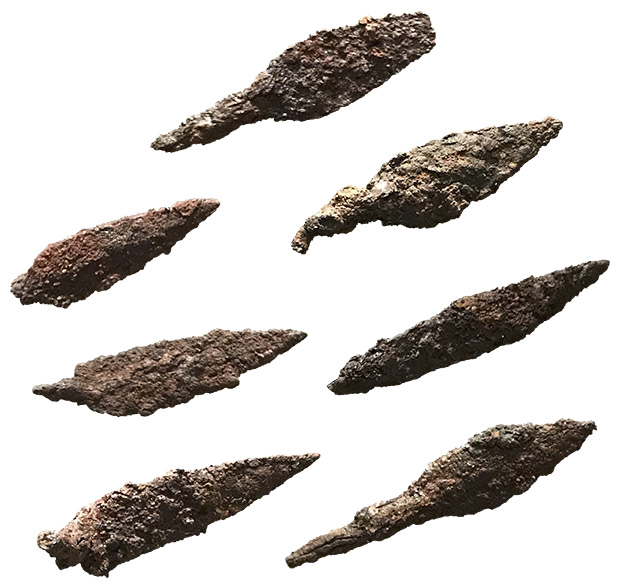
Sennacherib’s Annals mention these tactics among the various strategies he employed to gain access to Judah’s fortified cities. He said that he overcame their defenses “by having ramps trodden down and battering rams brought up, the assault of foot soldiers, sapping, breaching, and siege engines.”19 One can see this depicted in considerable detail in the reliefs at the British Museum (below). The archaeological finds at Lachish also revealed that the Assyrians eventually broke through the southwest corner and further extended their siege ramp in order to attack the upper city wall.
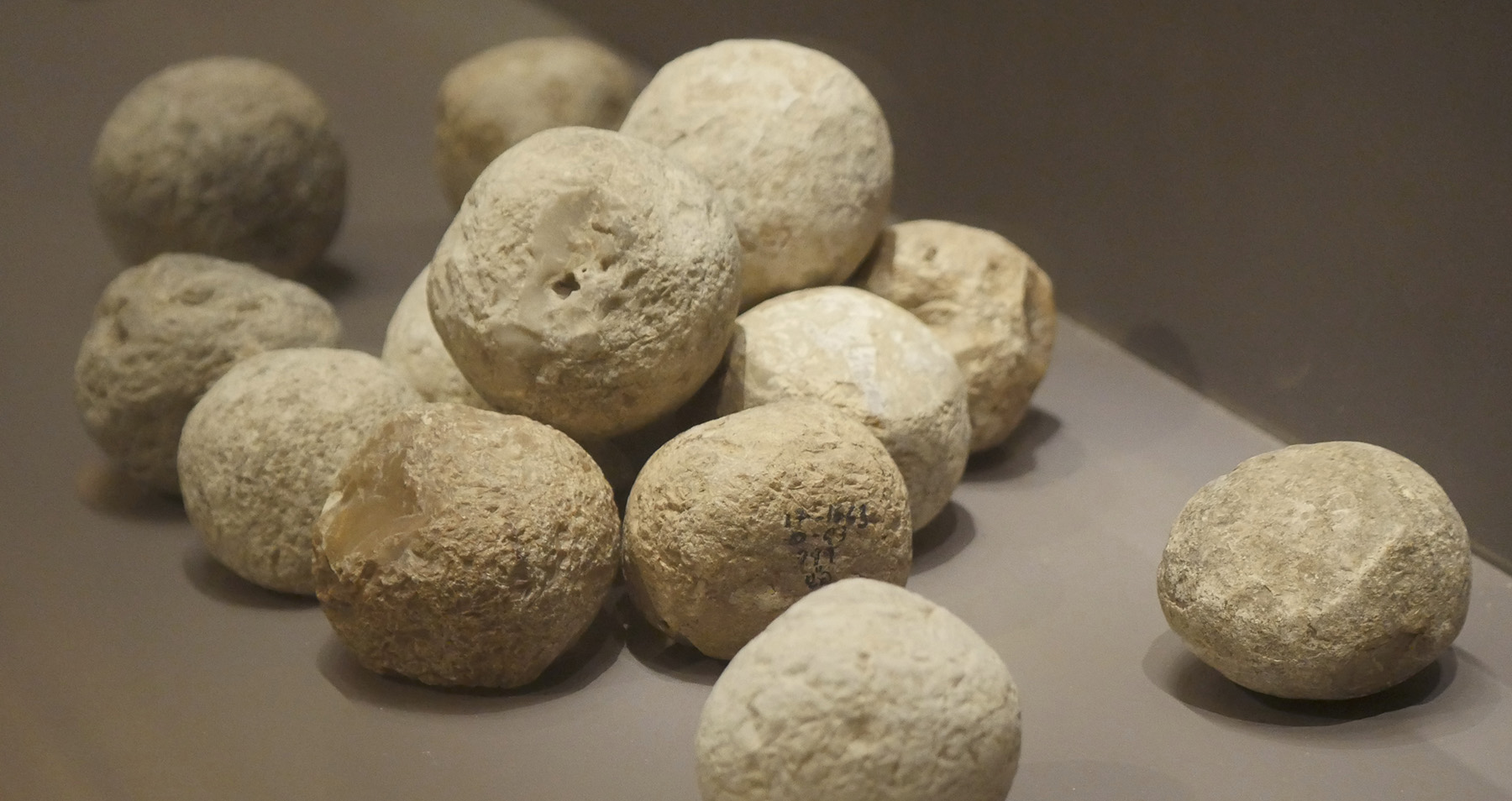
Meanwhile, inside the city, excavations have shown that the residents of Lachish created a counter siege ramp (figure 1.11) to retain the high ground and buttress the upper wall. Alas, this only appears to have provided temporary relief, as the Assyrians eventually breached the walls and overcame Lachish’s defenders.

Along the city walls, a great deal of weaponry from the battle was found, including nearly 1,000 arrowheads in the southwest corner alone (figure 1.12), plus many rounded sling stones (figure 1.13), Assyrian armour scales (figure 1.14), and several tools likely used by the Judahites in an attempt to counter the battering rams.
In the end, Sennacherib’s troops set the city ablaze, and evidence for this fiery destruction has been found throughout the city (figure 1.15). According to David Ussishkin, director of excavations at Lachish from 1973–1994,
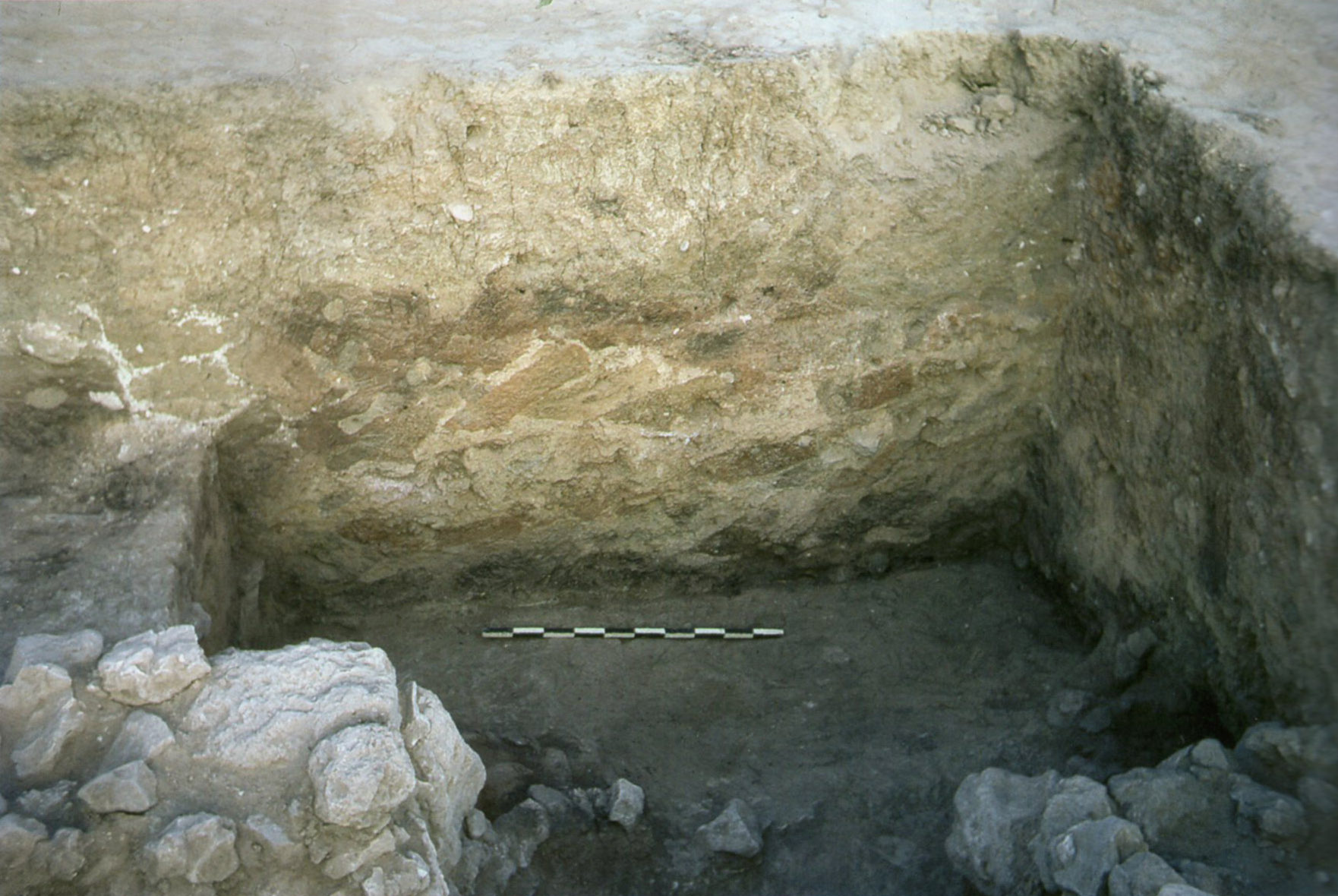
No matter where the excavators turned as they dug, they immediately found heaps of debris piled high — fired bricks, burned wood, layers of ash, smashed vessels and vessels deformed by the great heat. Some of the brick walls collapsed and the bricks themselves reddened as they were fired by the flames … . I do not recall any other ancient site in the Land of Israel where devastation of such magnitude can be seen.20
Nineveh’s palace pictures—the Lachish Reliefs
Back in Nineveh, Sennacherib later commemorated his victory at Lachish by creating a large stone-carved mural. The battle was graphically portrayed on a series of wall panels from a prominent room inside his “Palace Without Rival,” as he called it.21 Dubbed the ‘Lachish Reliefs’, the panels were discovered by Austen Henry Layard during his excavations of Sennacherib’s southwest palace in 1845–1847. Unfortunately, the portions of the reliefs Layard left in Nineveh were subsequently lost. But the twelve panels he brought to England can still be seen today in the British Museum (figure 1.16).
Though artistically stylized, the Lachish Reliefs are believed by many scholars to accurately depict important aspects of the conflict. In the details, one can see that the walls and gate of Lachish are represented, probably as seen from the southwest. The Assyrian infantry is fighting against the Judahite defenders, with archers and slingers on both sides. Several ladders are propped against the walls so they can be scaled. Assyrian spearmen and other soldiers are ascending the siege ramp(s) on foot. Seven man-powered siege engines with battering rams appear on the ramps as well. Judahite soldiers are throwing stones, torches, and even burning chariots down onto the Assyrians. Simultaneously, Assyrian soldiers are protecting their siege engines from the flames by dousing them with water.

A procession of Judahite captives is coming out of the city gate, as they make their way to the right side of the scene, toward the Assyrian camp. The lifeless bodies of some of the captives—perhaps the city leaders—have been impaled on stakes. Other captives are being tortured or killed in various ways. The remaining prisoners, along with confiscated booty, are brought to Sennacherib himself, where an inscription reads: “Sennacherib, king of the universe, king of Assyria, seated upon a sedan chair, the spoils of Lachish passed before him.”
Conclusion
As we have seen, archaeology nicely corroborates the biblical account to this point in the story. But how did Hezekiah and the nation of Judah survive this invasion? In part 2, we will explore Hezekiah’s preparations to safeguard Jerusalem, and the battle of words that took place between the Assyrians and the people of God.
Hezekiah’s LMLK storage jars


Besides those covered in the main article, another fascinating and much-discussed archaeological connection to Hezekiah comes from the LMLK (L’Melekh) jars. These are large, egg-shaped storage jars with four handles attached at the shoulder (figure 1.17). Before firing, some of the handles were stamped with seals depicting a winged sun or scarab, somewhat akin to the emblems on Hezekiah’s royal seals (see main text). These handle seals contain the letters “LMLK” which, in Hebrew, means “Belonging to the king” (figure 1.18). Furthermore, the inscriptions also typically include the name of one of four locations—Hebron, Mamshat, Socoh, or Zif.

Many mysteries surround these jars. What precisely was their function? What is the significance of the four specified locations, which were secondary cities in Judah? While three of these refer to known cities, scholars are not sure about the location of Mamshat. Where is it? Why do some of the jars include personal stamps in addition to the mass-produced LMLK stamps? What is the meaning of the concentric rings carved into some of the handles after firing?
It is clear that the jars should be dated to a short period of time within Hezekiah’s reign. Most of the jar fragments are found in the destruction layers wrought by Sennacherib. They are found concentrated at sites throughout the land of Judah, and also elsewhere to a lesser extent (figure 1.19). Over 500 of these stamped handles and several complete jars were recovered from Lachish, and over 4,000 handles have been found throughout the entire kingdom. LMLK jars have also been found in the Philistine cities of Gath, Ashdod, Azekah, and Ekron, consistent with Hezekiah’s encroachment into Philistia prior to the Assyrian invasion (2 Kings 18:8). They were all made from the same type of clay, and locally mass produced—possibly from one distribution center in the Shephelah (foothills of Judah). A mere 22 or so stamps were used to create all the impressions on these jars.
Many scholars believe the LMLK jars could have been related to Hezekiah’s preparations for Sennacherib’s attack. They might have been part of a distribution system to store foodstuffs for Hezekiah’s soldiers, for example. But, whatever their exact function, LMLK jars have certainly become useful to modern archaeologists who treat them as a chronological marker, helping to date layers in which they are buried to the time of King Hezekiah.
References and notes
- See also 2 Kings 20:20, 2 Chronicles 32 and Isaiah 36–37. Return to text.
- Deutsch, R., Lasting Impressions: New bullae reveal Egyptian-style emblems on Judah’s royal seals, Biblical Archaeology Review 28(4), July/August 2002. Return to text.
- The Hebrew University of Jerusalem, Impression of King Hezekiah’s royal seal discovered in excavations in Jerusalem, ScienceDaily.com, 2 December 2015. Return to text.
- Ref. 2. See also Lubetski, M., King Hezekiah’s Seal Revisited, Biblical Archaeology Review 27(4), July/August 2001. Return to text.
- Royal Inscriptions of the Neo-Assyrian Period (RINAP) 3, Sennacherib Chicago/Taylor Prism, 3:18–21. Return to text.
- Micah 1 and Isaiah 22 also refer to disaster befalling various cities of Judah around this time, possibly alluding to Sennacherib’s invasion. Return to text.
- Luckenbill, D.D., The Annals of Sennacherib, p. 32, The University of Chicago Press, Chicago, IL, 1924. Return to text.
- Kelm, G.L., and Mazar, A, Timnah: A Biblical City in the Sorek Valley, pp. 119–120, 135, Eisenbrauns, Winona Lake, IN, 1995. Return to text.
- Young, R.A., Hezekiah in History and Tradition, pp. 62–65, Brill, Leiden, The Netherlands, 2012. Young points out that there is some dispute about Beersheba. Return to text.
- Ussishkin, D., Sennacherib’s Campaign to Judah: The archaeological perspective with an emphasis on Lachish and Jerusalem, in Kalimi, I., and Richardson, S. (eds.), Sennacherib at the Gates of Jerusalem, pp. 99–100, Leiden, The Netherlands, Brill, 2014. Return to text.
- Halpern, B., From Gods to God: The Dynamics of Iron Age Cosmologies, p. 366, Mohr Siebeck, Tübingen, Germany, 2009. Return to text.
- Luckenbill, D.D., The Annals of Sennacherib, p. 33, The University of Chicago Press, Chicago, IL, 1924. Return to text.
- Dagan, Y., Results of the Survey: Settlement Patterns in the Lachish Region, in Ussishkin, D. (ed.), Renewed Archaeological Excavations at Lachish, Vol. 5, p. 2683, 2004. Return to text.
- Some possible explanations for the discrepancy are given by Kitchen, K.A., On the Reliability of the Old Testament, p. 42, Wm. B. Eerdmans Publishing Co., Grand Rapids, MI, 2003. Other possibilities are offered by Evans, P.S., The Invasion of Sennacherib in the Book of Kings, p. 144, note 16, Brill, Leiden, The Netherlands, 2009. Return to text.
- RINAP 3, Sennacherib Chicago/Taylor Prism, 3:37–47. Return to text.
- Ganor, S. and Kreimerman, I., Going to the Bathroom at Lachish, Biblical Archaeology Review 43(6), November/December 2017. Return to text.
- For a critical assessment, see Na’aman, N., The Debated Historicity of Hezekiah’s Reform in the Light of Historical and Archaeological Research, Zeitschrift Für Die Alttestamentliche Wissenschaft, 107(2):179–195, 1995. For a favorable assessment, see Finkelstein, I., and Silberman, N.A., Temple and Dynasty: Hezekiah, the remaking of Judah and the rise of the pan-Israelite ideology, Journal for the Study of the Old Testament 30(3):269–275, 2006. Return to text.
- Moulis, D.R., Hezekiah’s religious reform—in the Bible and archaeology, Bible History Daily, 9 June 2018, biblicalarchaeology.org. Return to text.
- RINAP 3, Sennacherib Chicago/Taylor Prism, 3:21–23. Return to text.
- Ussishkin, D., Biblical Lachish, p. 219, Israel Exploration Society and Biblical Archaeology Society, Jerusalem, 2014. Return to text.
- Elayi, J., Sennacherib, King of Assyria, p. 174, SBL Press, Atlanta, GA, 2018. Return to text.



Readers’ comments
Comments are automatically closed 14 days after publication.